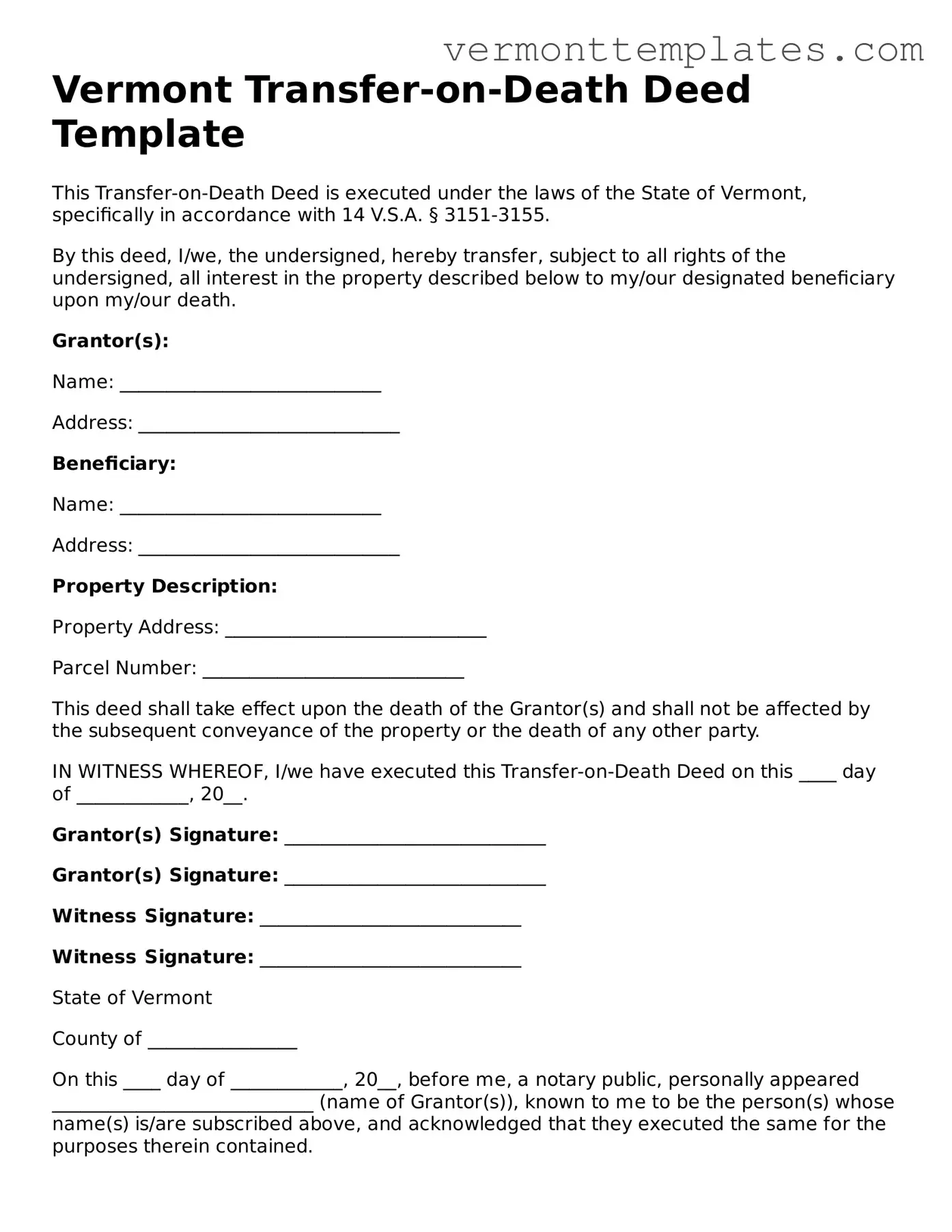Vermont Transfer-on-Death Deed Template
This Transfer-on-Death Deed is executed under the laws of the State of Vermont, specifically in accordance with 14 V.S.A. § 3151-3155.
By this deed, I/we, the undersigned, hereby transfer, subject to all rights of the undersigned, all interest in the property described below to my/our designated beneficiary upon my/our death.
Grantor(s):
Name: ____________________________
Address: ____________________________
Beneficiary:
Name: ____________________________
Address: ____________________________
Property Description:
Property Address: ____________________________
Parcel Number: ____________________________
This deed shall take effect upon the death of the Grantor(s) and shall not be affected by the subsequent conveyance of the property or the death of any other party.
IN WITNESS WHEREOF, I/we have executed this Transfer-on-Death Deed on this ____ day of ____________, 20__.
Grantor(s) Signature: ____________________________
Grantor(s) Signature: ____________________________
Witness Signature: ____________________________
Witness Signature: ____________________________
State of Vermont
County of ________________
On this ____ day of ____________, 20__, before me, a notary public, personally appeared ____________________________ (name of Grantor(s)), known to me to be the person(s) whose name(s) is/are subscribed above, and acknowledged that they executed the same for the purposes therein contained.
Notary Public Signature: ____________________________
My Commission Expires: ____________________________
